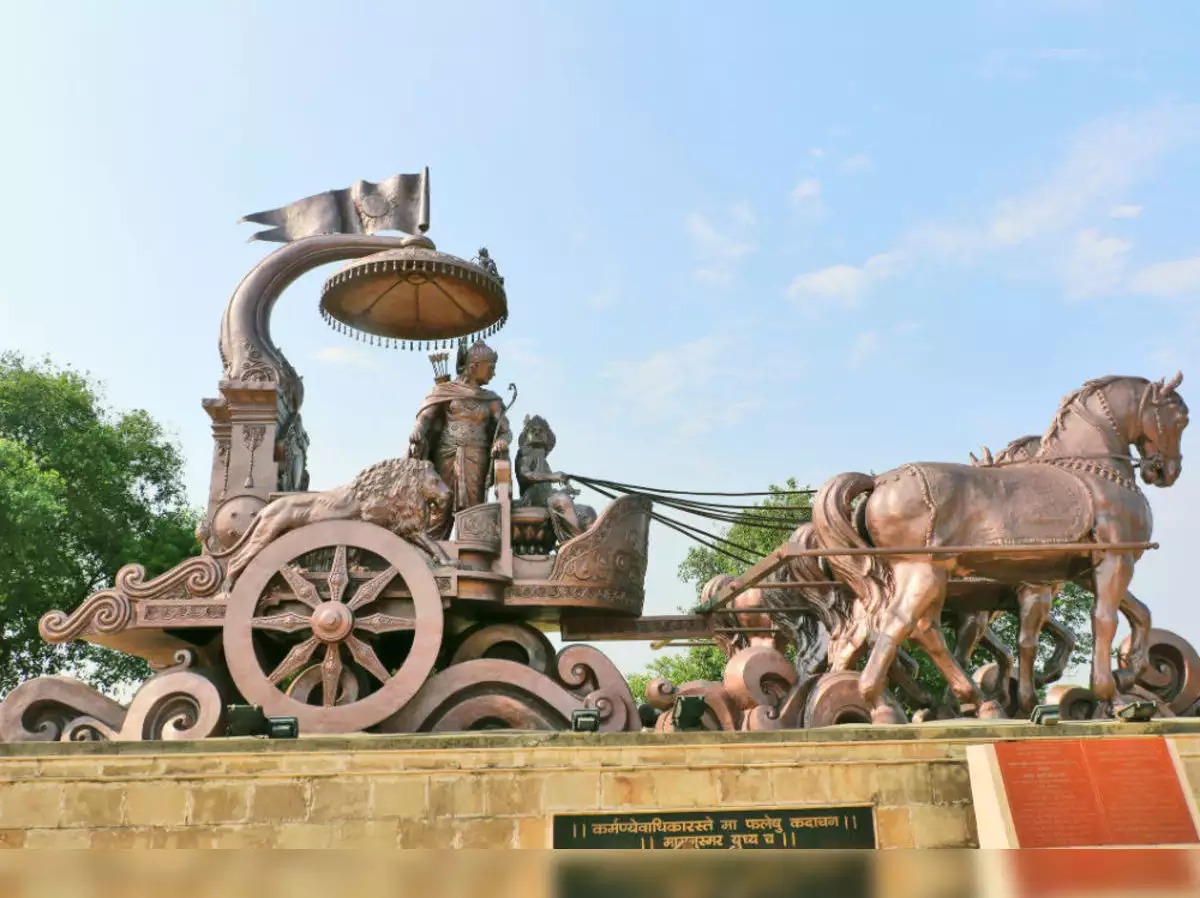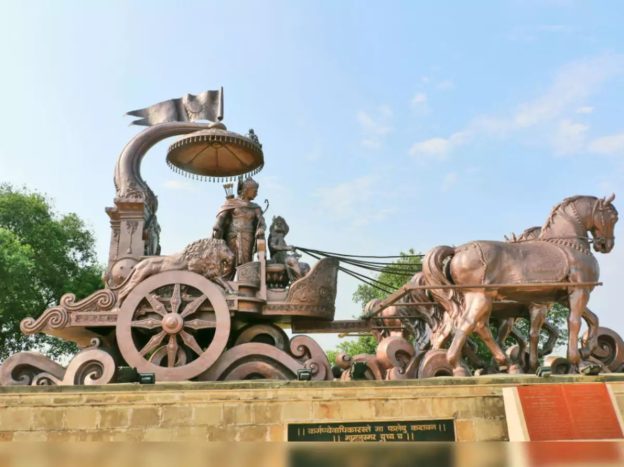
This Holy place Kurukshetra is the place where the great battle of the Mahabharata was fought and it’s the place where Lord Krishna spoke the Bhagavad-Gita.
Kurukshetra lies about one hundred miles north of New Delhi, Kurukshetra, located in the state of Haryana, is a four-hour train or car ride from Delhi. It’s on main highway.
Kurukshetra has also played a dominant role in the history and culture of ancient India for thousands of years before the battle of Mahabharata. Kurukshetra’s religious importance is described in many scriptures, including the Bhagavad-Gita, the Mahabharata, and various Upanishads and Puranas.
The first verse of the Gita refers to Kurukshetra as dharma-kshetra, or “the field of dharma,” indicating that it was already known as a holy place. Kurukshetra is one of those holy places that have borne the imprint of Lord Sri Krishna’s footsteps. Indian government has named the state as ‘Haryana’ which in local language means: ‘Hari ka aana’ (Lord Hari came here).
Kurukshetra was formerly known as Brahmakshetra, Bhrughukshetra, Aryavarta, and Samanta Panchaka. It became known as Kurukshetra because of the work of King Kuru, an ancestor of mighty Pandavas.
The Mahabharata tells of how King Kuru made the land a great center of spiritual culture. King Kuru went there on a golden chariot and used the chariot’s gold to make a plow. He then borrowed Lord Shiva’s bull and Yamaraja’s buffalo and started plowing. When Indra arrived and asked Kuru what he was doing, Kuru replied that he was preparing the land for growing the eight religious virtues: truth, yoga, kindness, purity, charity, forgiveness, austerity, and celibacy. Indra asked him to where he would get the seed of these virtues. King replied that the seed was in his possession. At this Indra laughed and went away.
Undaunted, Kuru performed great penance and continued to plow. After the king had cultivated land for several days, Lord Vishnu appeared before him and asked as to what he was doing? King replied in the same manner as he had done when questioned by Indra. Vishnu asked Kuru to give Him the seed and that He would sow it for him. At this Kuru put forward his right arm and the same was cut into 1000 pieces with the Chakra of Vishnu and sown in the field. King Kuru then offered his left arm, his 2 legs and then his head to Lord Vishnu for sowing. This act of Kuru pleased Vishnu very much and Indra also appeared at this stage and told that he was very much pleased with his sacrifice and told him to ask for any boon from him. Kuru there-upon begged of him 2 boons: one, that this land would forever remain a holy land named after himself, and the other, that anyone dying here would get entry to heaven irrespective of his sins or virtues. Being thus blessed both by Lord Vishnu and Lord Indra however, other demigods expressed doubts. They said that death without sacrifice did not merit a place in heaven. Finally, Kuru and Indra arrived at a compromise: Indra would admit into heaven anyone who died there while fighting or performing penance. So Kurukshetra became both a battlefield and a land of piety. Thus King Kuru with wealth of his state and his austerities established at Kurukshetra an extensive institution of spiritual culture for humanity as a whole.
Sripad Madhavacharya, a great Vaishnava Acharya, who is also the third son of Vayu (after Hanuman and Bhima) visited here around 1250 AD. During his visit he dug-up a certain piece of land in Kurukshetra and found the mace (club/gadaa) used by Bhima on the battle of Kurukshetra. Later after showing this to his disciples he again kept back the gada to the place where Bhima originally kept it after the battle.
The Vamana Purana says that nine sacred rivers and seven sacred forests exist in the region.
